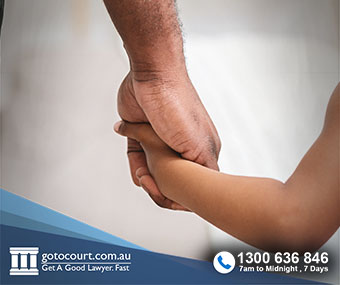Writing an Affidavit: The Dos and Don’ts
Writing an Affidavit: The Dos and Don’ts
An affidavit is a sworn statement filed in court as evidence in a court proceeding. It may be filed by a party to the proceeding or by a witness. An affidavit is different to a statutory declaration, which is also a sworn statement, but which is not used as evidence in court. Any affidavit filed in a proceeding must be correctly sworn or affirmed, must conform to certain formal requirements and must be served on all parties.
When do I file an affidavit?
When you initiate Family Law proceedings, you are required to file an affidavit setting out the evidence supporting your application. Likewise, when you respond to a Family Law Application, you must file an affidavit setting out the evidence in support of your response. This is the case for both initiating applications and interim applications. You may have to file additional affidavits at other stages in the proceeding as directed by the court.
What are the formal requirements?
- Affidavits must be sworn or affirmed in front of a qualified person (a legal practitioner or Justice of the Peace). If you are religious, you can choose to swear an oath to God that the contents of your affidavit is true and correct to the best of your knowledge. If you are a non-religious person, you can choose to make an affirmation, which is essentially a promise that the contents of the affidavit are true and correct. Making a false statement in an affidavit amounts to perjury and criminal sanctions apply.
- You must sign the final page of the affidavit and print your initials at the bottom of every page.
- Affidavits must be printed single-sided.
- If you are a non-English speaker, you must have had the affidavit read to you in a language you understand. The interpreter must sign a declaration that he or she has interpreted the contents of the affidavit accurately to you.
- If you are illiterate, you must have had the affidavit read to you.
- If you want to attach supporting documents, you must state in the affidavit what documents you are attaching and clearly mark them as annexures. The annexures must be numbered in sequential order. For example, if the affidavit reads ‘Annexure ‘AB1’ (AB being your initials) is a true copy of the medical certificate provided by Dr Walker in relation to my illness’, make sure you clearly mark Dr Walker’s medical certificate with ‘AB1’.
- Only attach documents that are essential to establishing your case. The fewer attachments the better. Lengthy text message exchanges or Facebook messenger exchanges are discouraged and are generally unhelpful.
- Affidavits in support of Interim Family Law Applications in the Federal Circuit and Family Court of Australia (FCFCA) are limited to ten pages (not including any annexures).
What do I include in an affidavit?
Your affidavit should be a comprehensive account of all the factual matters which are within your personal knowledge and which support your case. In family law matters, you have a duty to provide full and frank disclosure to the court (Federal Circuit and Family Court of Australia (Family Law) Rules 2021, Rule 6.01). This means that you are not allowed to leave out facts that do not advance your case. You must include all the facts that are relevant to the proceeding.
It is important to be as specific and as accurate as possible and to depose to specific occasions, rather than to general patterns of behaviour. For example, if you are detailing a history of family violence in a family law application, do not say ‘The father was very violent to me.’ Rather, give the details of as many specific occasions of violence as you can recall, together with the location and approximate date each incident occurred.
Do not include statements of your opinions or legal submissions. For example, do not say, ‘I think he is a bad father’ or ‘He should not be given custody’. Rather, detail the facts that are the basis for the opinions you hold and the submissions you plan to make.
How do I structure an affidavit?
The simplest way to structure an affidavit is chronologically. Start with the first event that is relevant to the proceeding. In a Family Law matter, this is likely to be when the parties met and started a relationship. Go on to detail all the facts and events that are relevant to the proceeding.
Use subheadings where appropriate. If there are particular issues that the court is likely to be concerned about, it may be helpful to the court to devote a specific section to each of them.
Remember that the purpose of your affidavit is to set out your evidence as clearly as possible. You will need to be able to find your way around the material easily and so will the other parties and the judge. The better organised your material is, the easier it will be for the judge to understand your case and for you to persuade the court to make the orders you are seeking.
If you need legal advice or assistance preparing an affidavit or other court documents, please contact Go To Court Lawyers.

Affordable Lawyers
Our Go To Court Lawyers will assist you in all areas of law. We specialise in providing legal advice urgently – at the time when you need it most. If you need a lawyer right now, today, we can help you – no matter where you are in Australia.How It Works




1. You speak directly to a lawyer
When you call the Go To Court Legal Hotline, you will be connected directly to a lawyer, every time.

2. Get your legal situation assessed
We determine the best way forward in your legal matter, free of charge. If you want to go ahead and book a face-to-face appointment, we will connect you with a specialist in your local area.

3. We arrange everything as needed
If you want to go ahead and book a fact-to-face appointment, we will connect you with a specialist in your local area no matter where you are and even at very short notice.
























